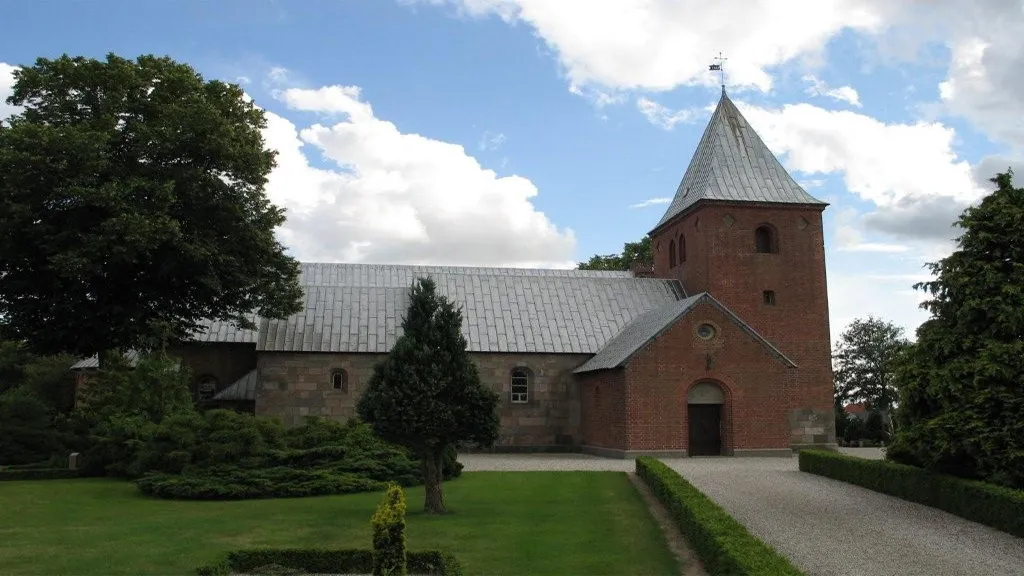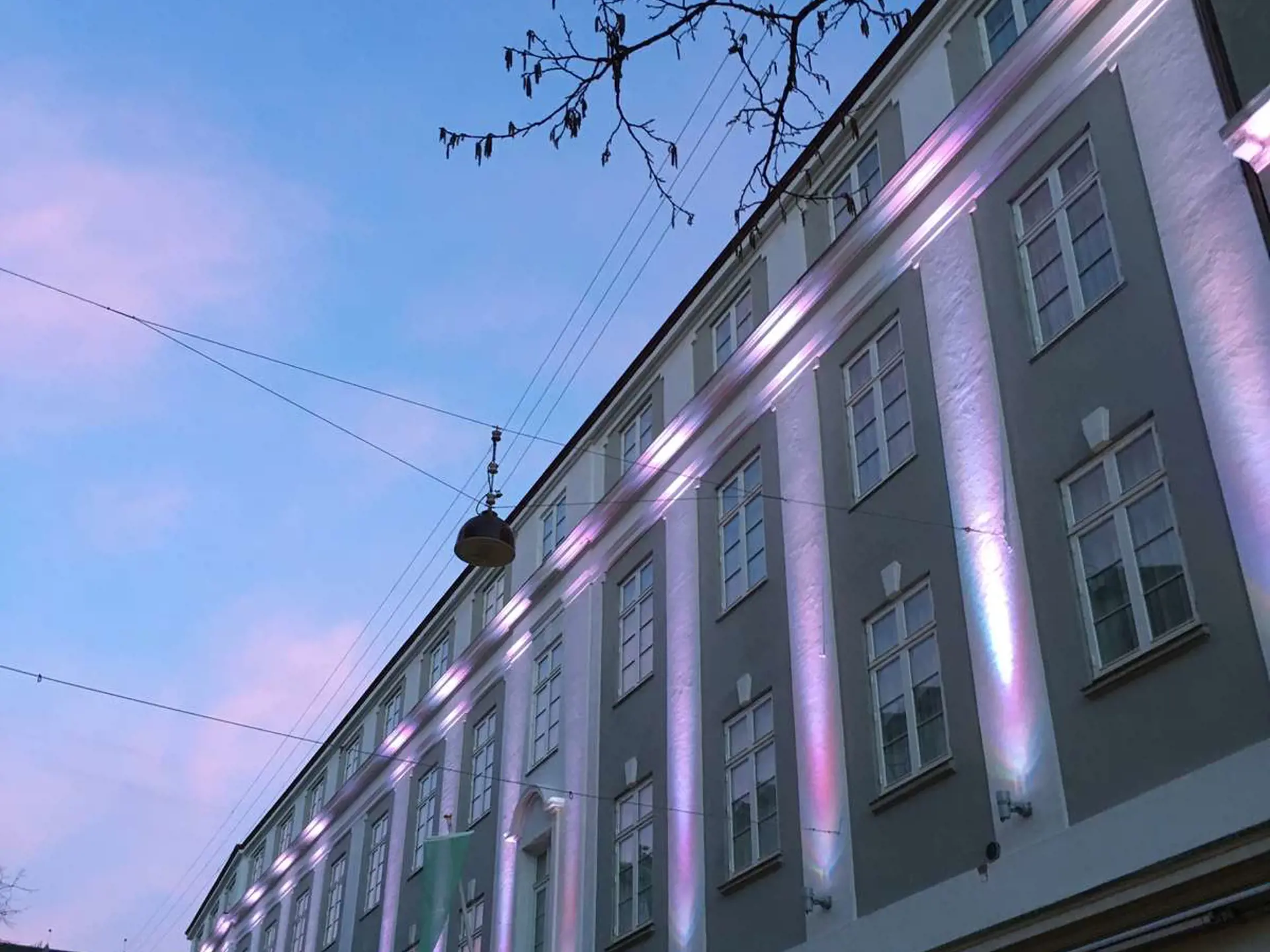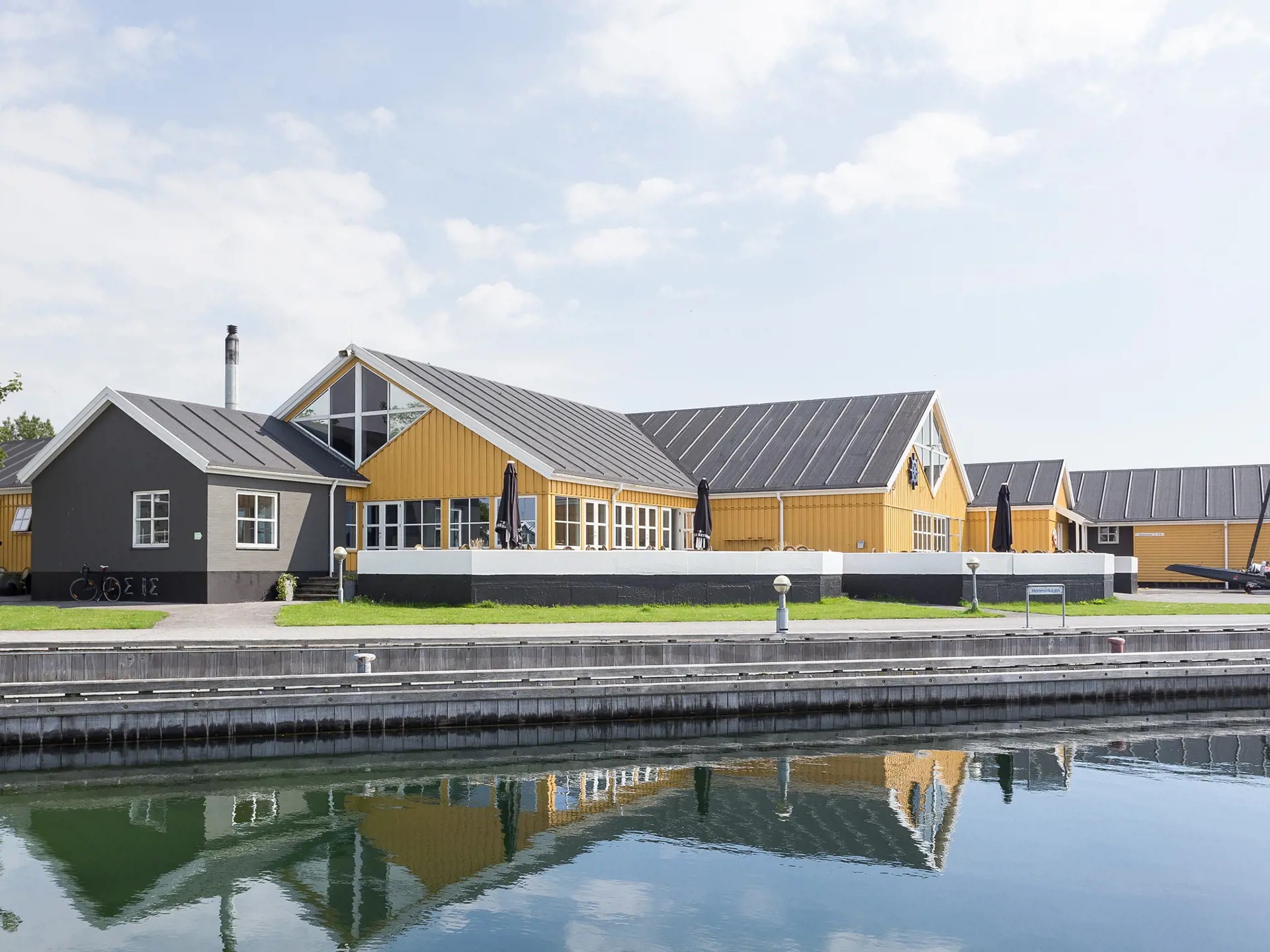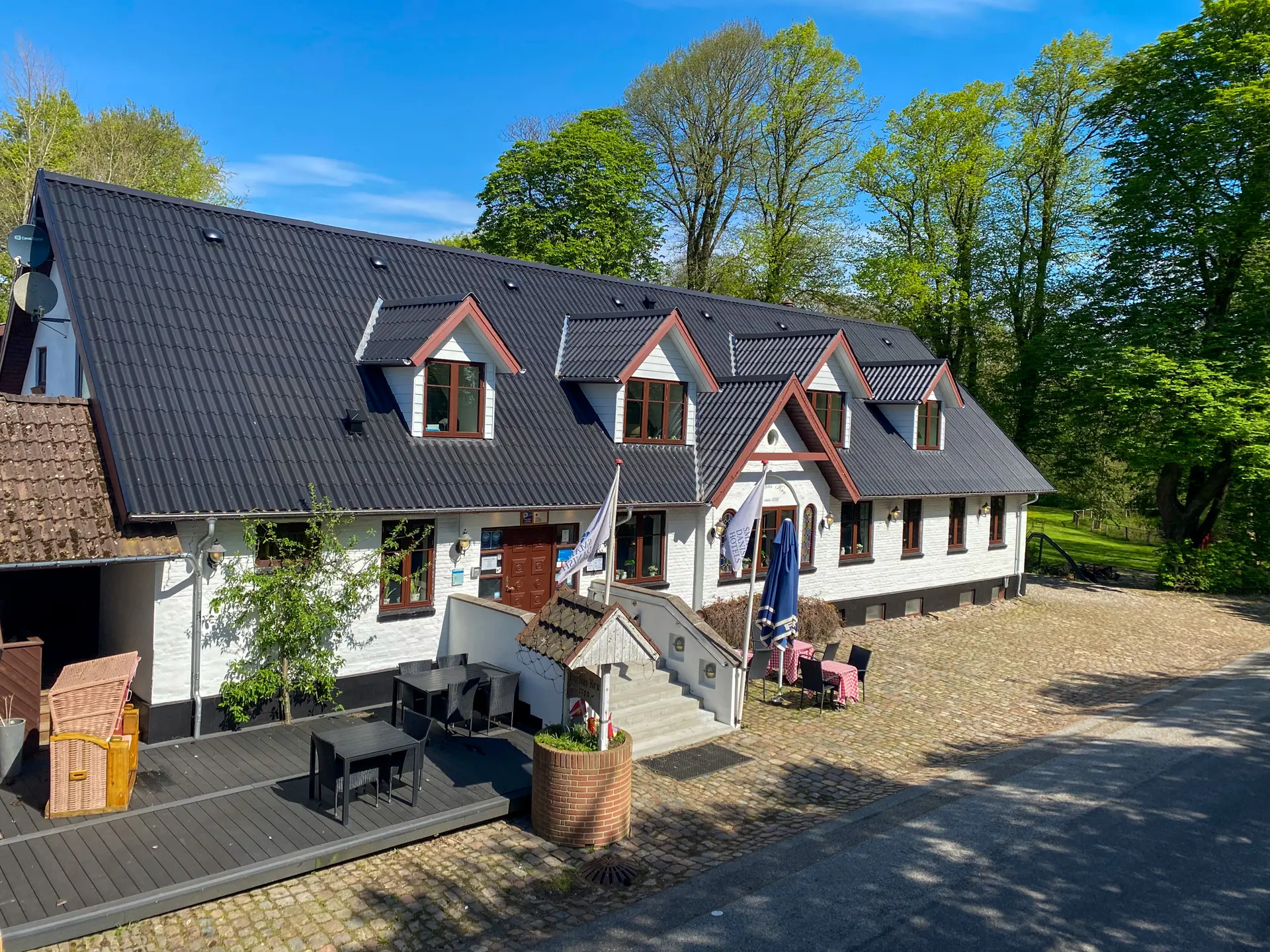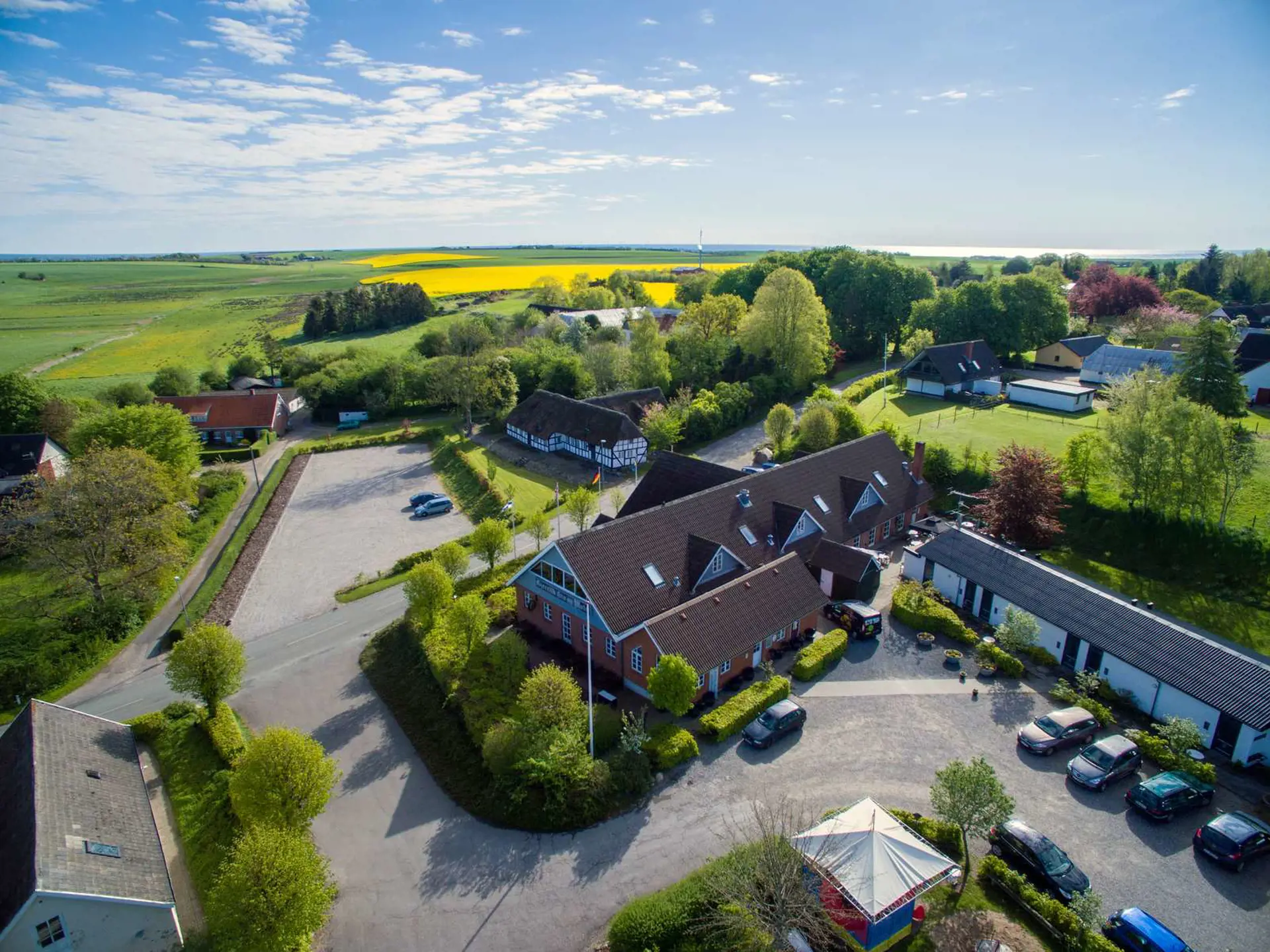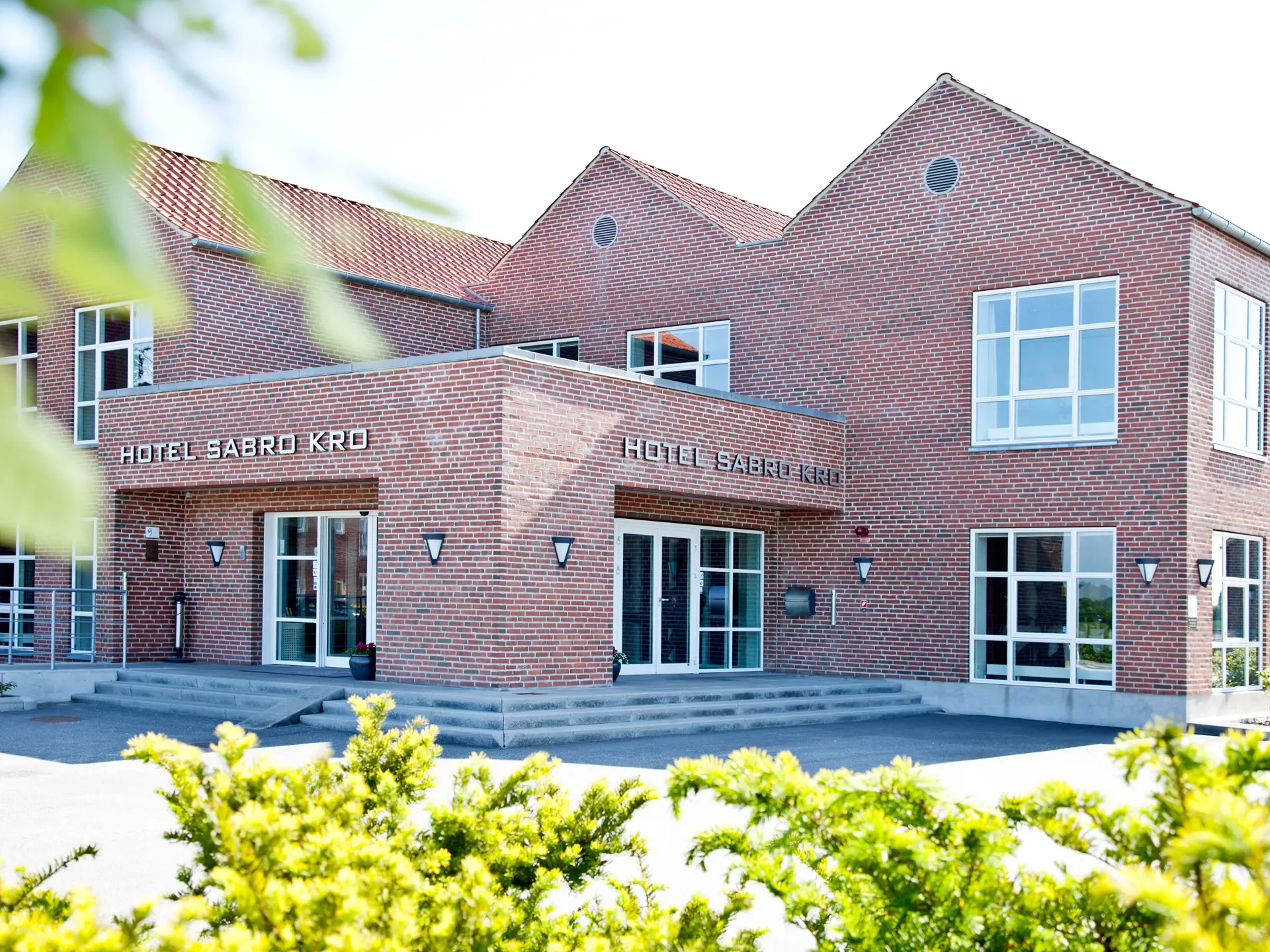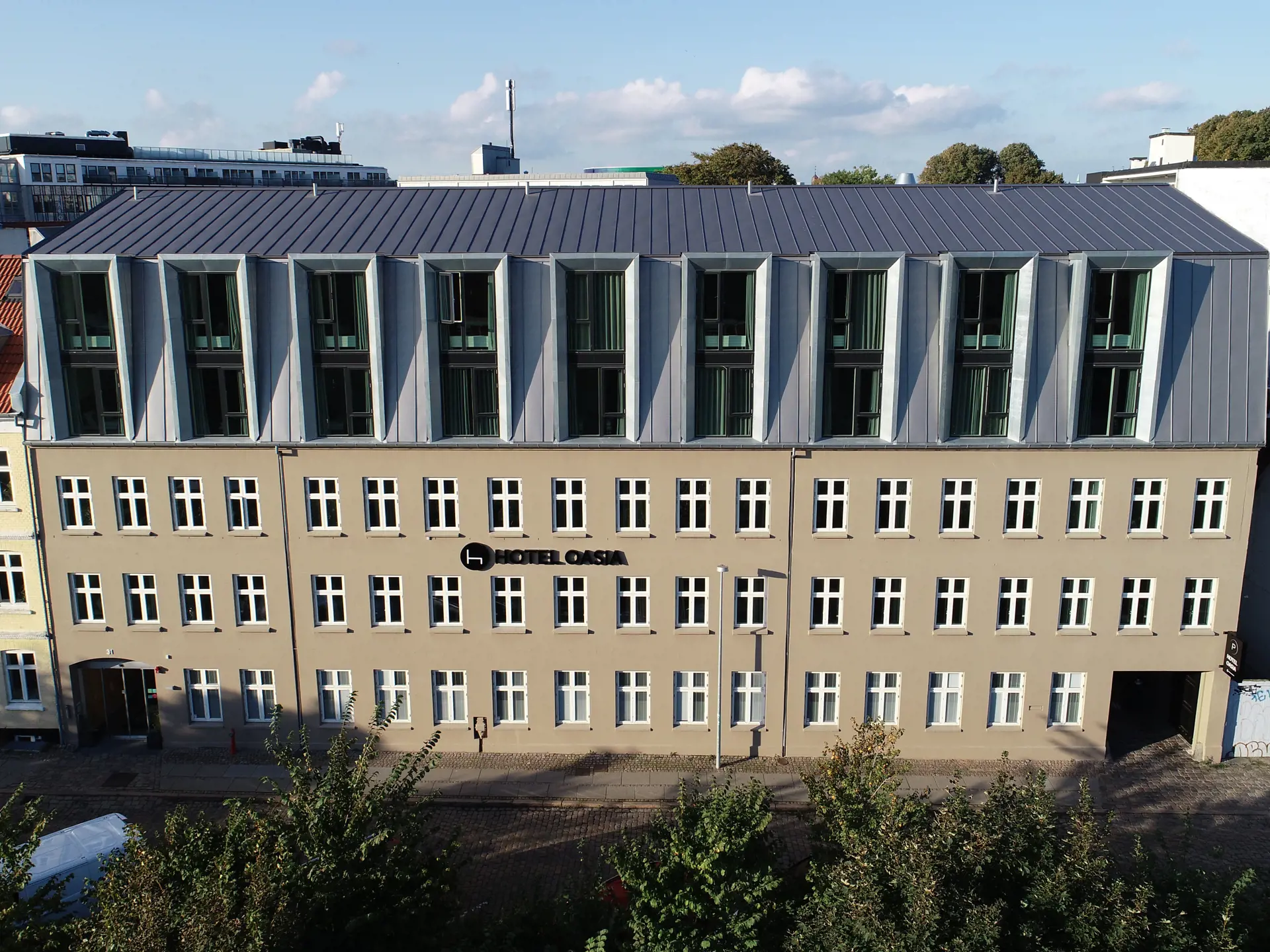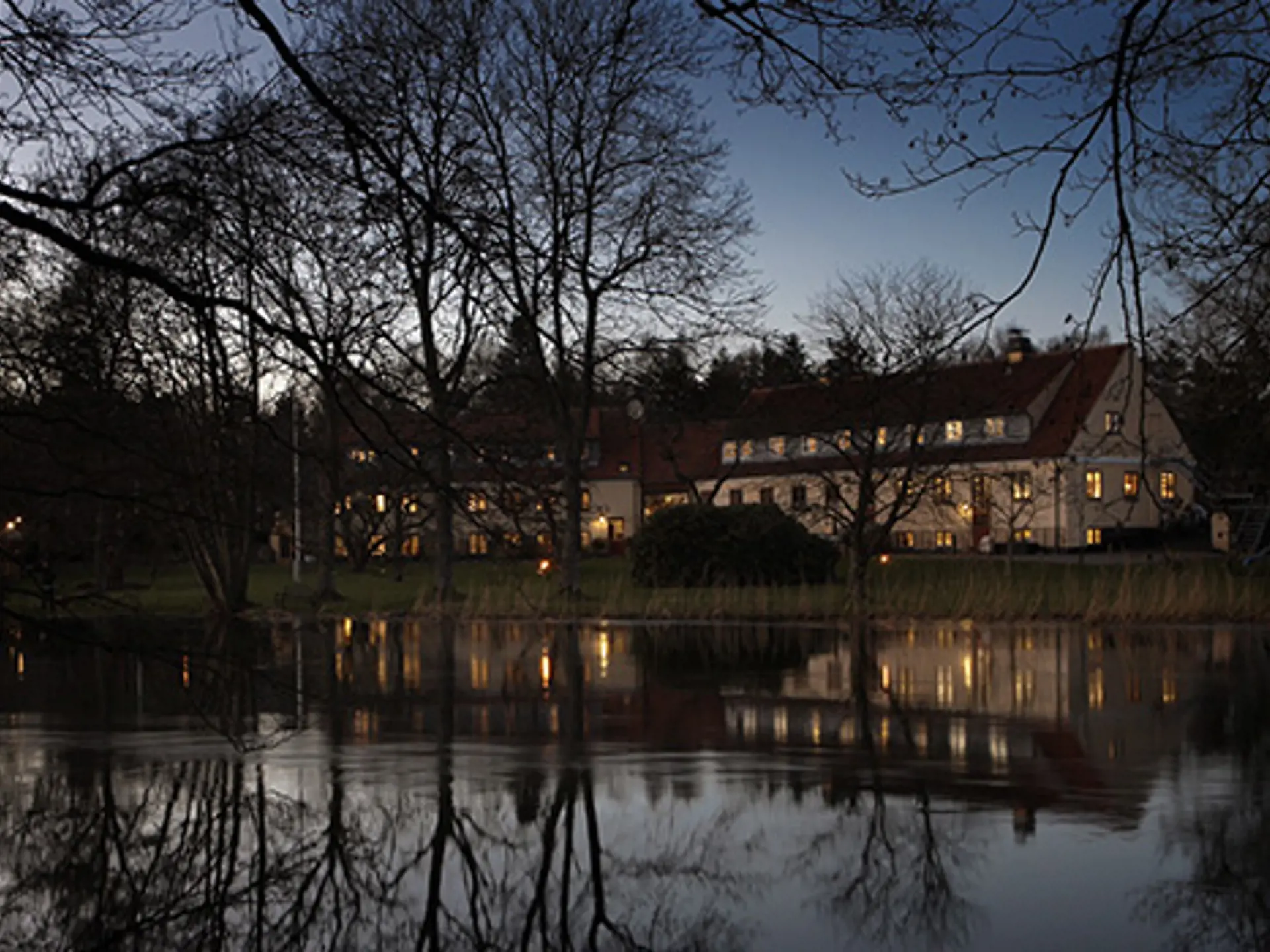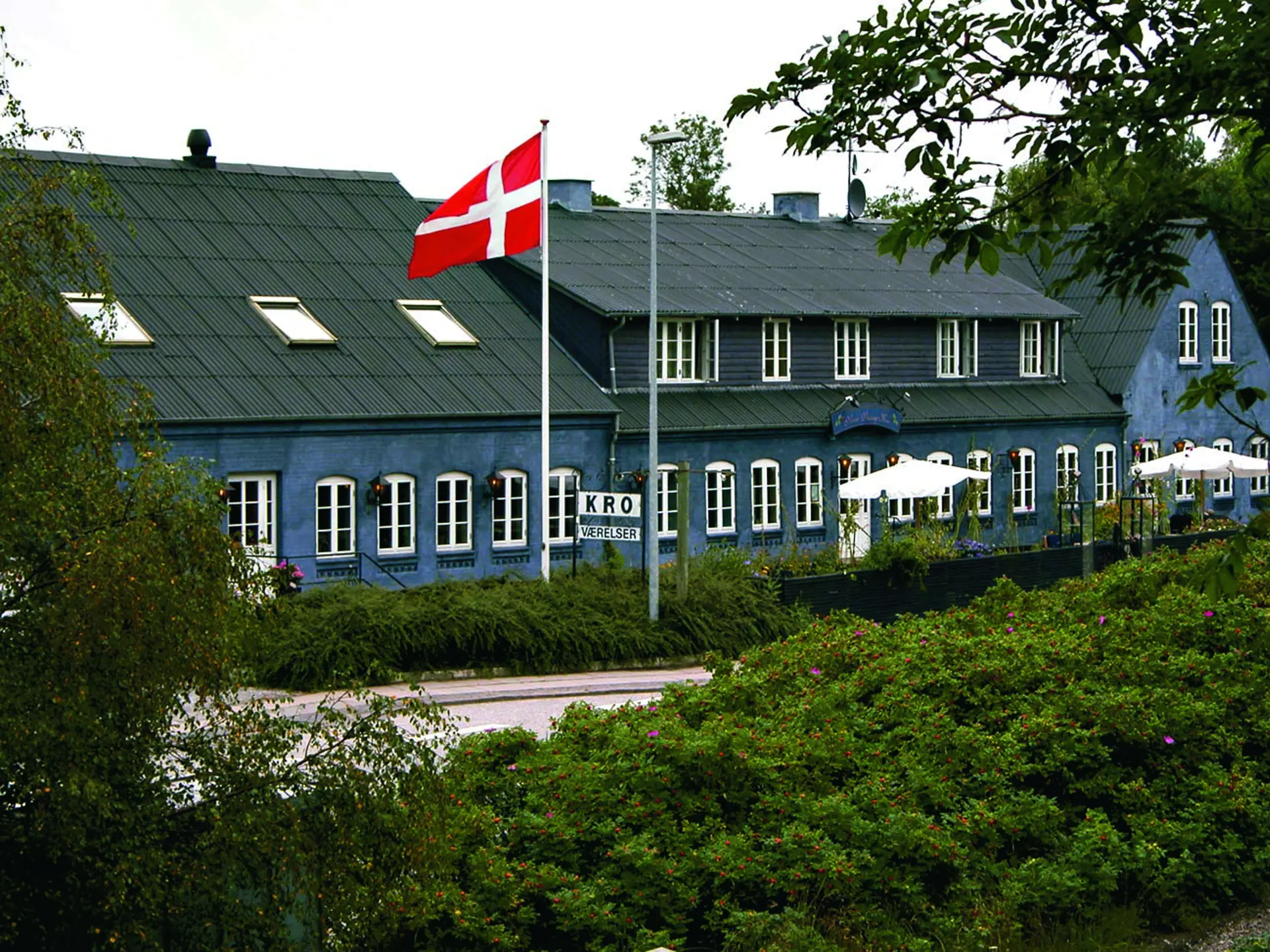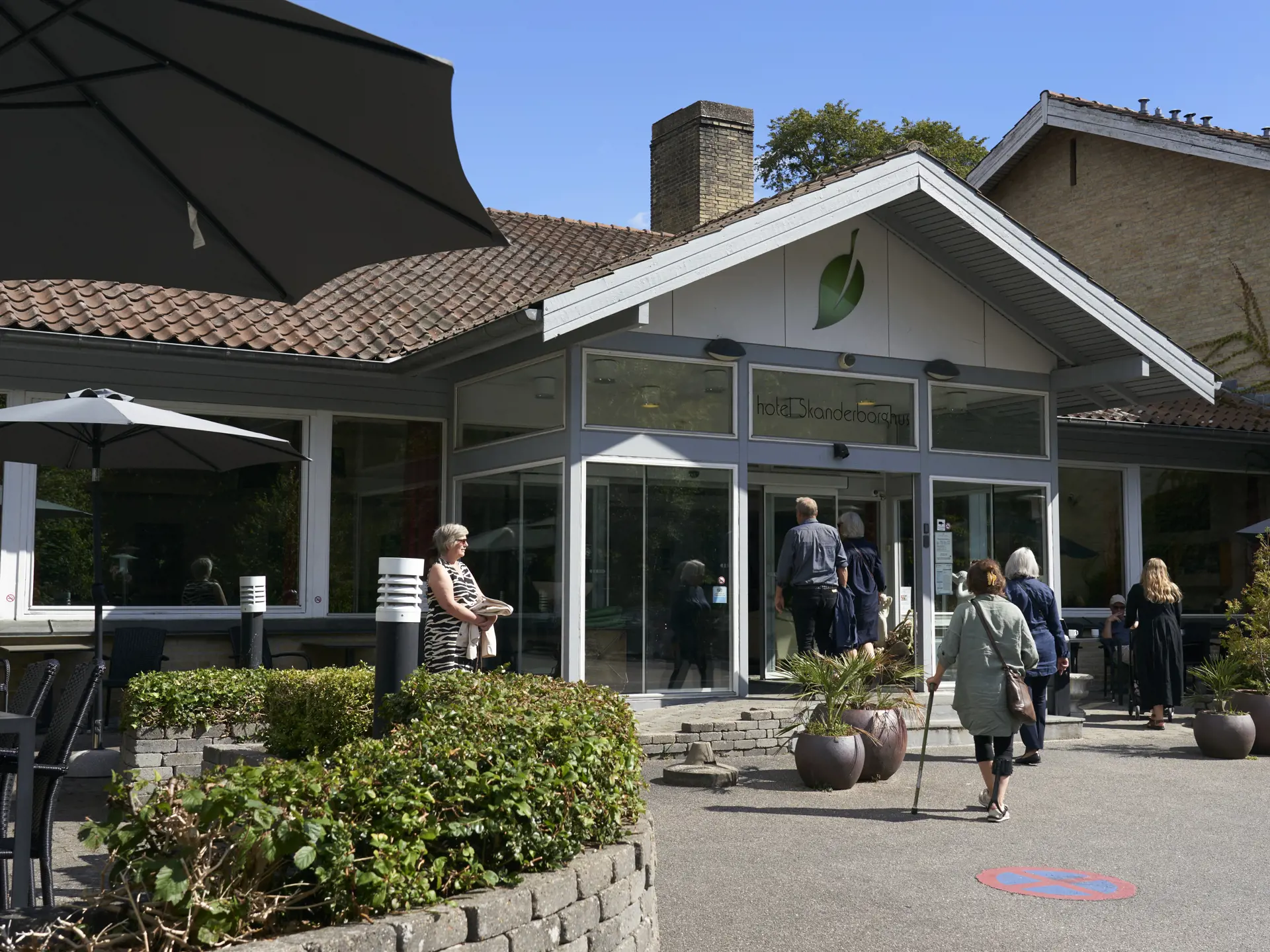As the church stands on a small hill in the old ford village, it is easy to imagine that the farmers of that time built the church in the middle of their farms. This meant that the church was raised to the highest point in the village, so they had to climb the hill to seek strength and comfort in the community of worship. In their busy everyday lives with animals and land, they had to look up to see the church, which had no tower for the first 3-4 centuries.
A round apse in large red bricks appears next to the flat east wall of the old church. It reveals that there is a church nave south of the old one, built much later in new but large bricks to match the monk bricks in the tower and porch.
In the west gable, an entrance door has been inserted that is wide enough to allow a coffin to pass through or a procession of confirmands to enter the church and walk up to the altar along the wide central aisle. This new door is located in the middle of the magnificent granite portal made by the famous stonemason Hårder, who worked in Djursland in the 13th century.
Inside the church, you can see elements from the old Romanesque church with round arches and star vaults, richly decorated with decorative frescoes featuring flower vines and lines in variegated colours.
